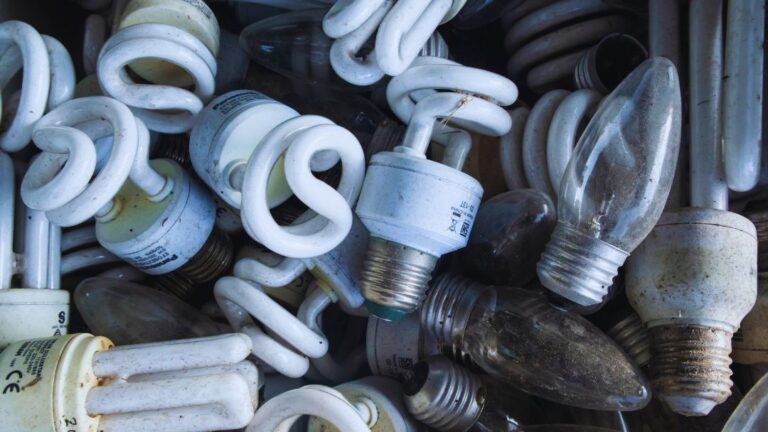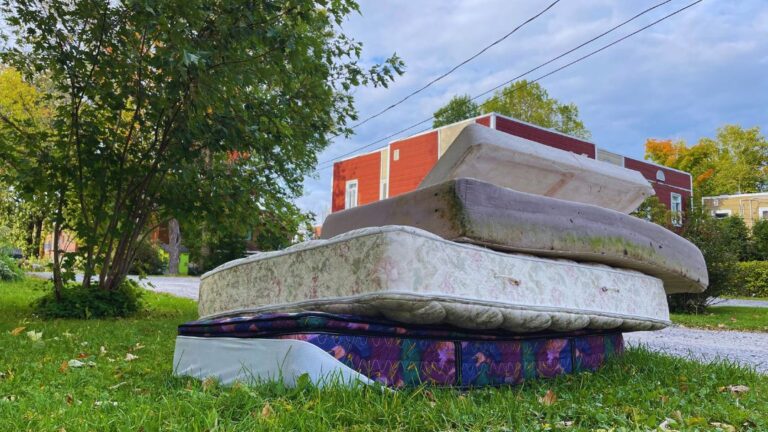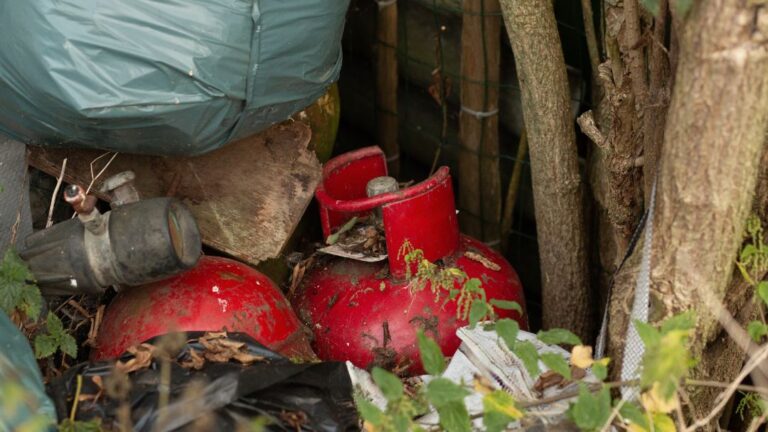Hazardous waste can pose a significant risk to both human health and the environment. Proper disposal and management of these materials are crucial for maintaining a safe living space and preserving the ecosystem.
In this blog, we’ll explore 10 common hazardous waste examples that everyone should be aware of and discuss why it’s important to handle them with care.
What is Hazardous Waste?
Before diving into the examples, let’s quickly define what hazardous waste is. Hazardous waste refers to any material that is dangerous or potentially harmful to human health or the environment. This waste can be toxic, flammable, corrosive, or reactive.
For something to be classified as hazardous, it must be one or more of these things, and it must meet certain criteria set by regulatory agencies.
The Environmental and Health Risks of Hazardous Waste
Recycling rates in many countries are still significantly below what is required. In the U.S., one of the largest waste producers globally, the recycling rate was under 25 percent, based on the most recent data. This is concerning, especially when considering the environmental and health risks posed by hazardous waste.
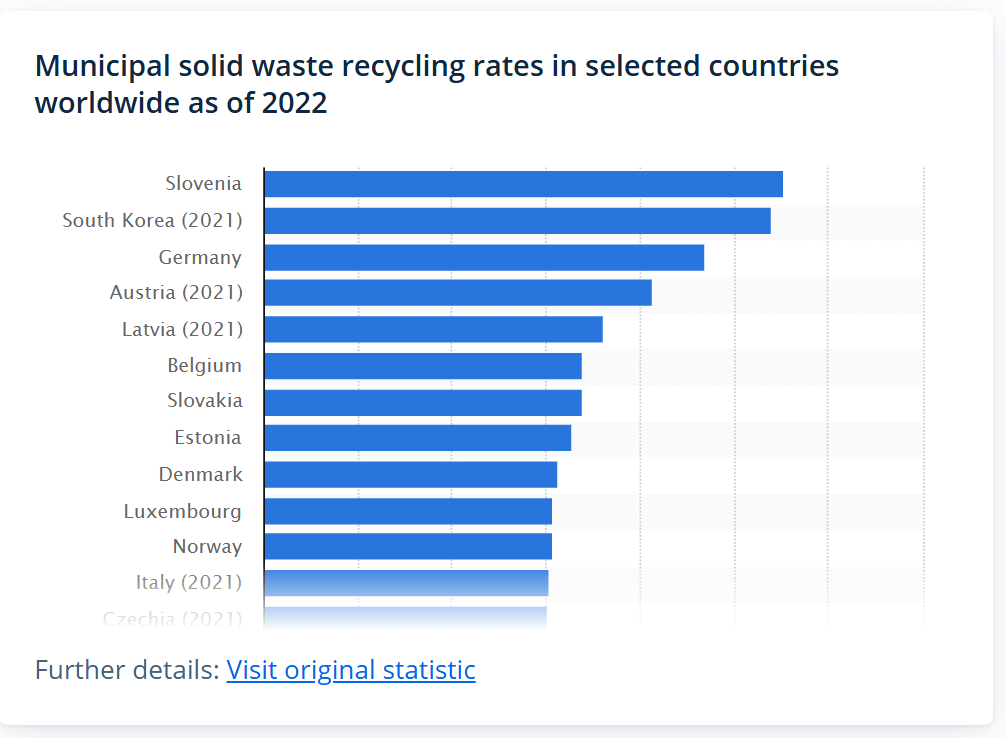
Hazardous waste poses significant risks to both the environment and human health. When improperly handled or disposed of, these materials can contaminate soil, water, and air, leading to long-term environmental damage. For instance, toxic chemicals from improperly discarded batteries or pesticides can seep into groundwater, affecting drinking water supplies and harming aquatic life.
On the human health side, exposure to hazardous waste can cause a range of health problems. Chemicals like lead and mercury, often found in products such as paint, batteries, and e-waste, can lead to neurological damage, developmental delays in children, and even cancer.
Now that we understand what hazardous waste and health risks are, let’s explore the top 10 hazardous waste examples.
1. Chemical Cleaning Products
Chemical cleaning products, like drain cleaners, oven cleaners, and bleach, can be hazardous. Many contain harmful chemicals that can cause skin irritation, respiratory problems, or even worse if ingested or improperly disposed of.
| Common Chemical Cleaners | Hazardous Ingredient(s) | Potential Hazards |
| Oven Cleaners | Lye, sodium hydroxide | Burns, eye irritation |
| Drain Cleaners | Sulfuric acid, lye | Skin burns, poisoning |
| Bleach | Sodium hypochlorite | Respiratory issues, burns |
A study from the American Chemical Society highlighted that certain chemical cleaners can release harmful fumes, especially when mixed with other substances like ammonia or vinegar.
2. Batteries
Batteries, especially rechargeable ones like lithium-ion batteries, contain heavy metals such as mercury, lead, and cadmium. Improper disposal can result in contamination of the soil and water.
| Battery Type | Hazardous Component(s) | Potential Risks |
| Lead-acid batteries | Lead, sulfuric acid | Poisoning, environmental contamination |
| Lithium-ion batteries | Lithium, cobalt | Fires, poisoning |
According to the Environmental Protection Agency (EPA), 3 billion batteries are discarded each year, contributing to millions of tons of hazardous waste globally.
3. Paint and Paint Thinners
Old paint cans, especially those with oil-based paints, and paint thinners contain harmful chemicals like lead, turpentine, and petroleum distillates. If not disposed of properly, they can leak into the environment, causing soil and water contamination.
| Paint Type | Hazardous Ingredient(s) | Risks |
| Oil-based paints | Lead, mercury, VOCs | Toxic, neurotoxic effects, environmental damage |
| Paint Thinners | Turpentine, toluene | Respiratory issues, headaches, environmental harm |
The Centers for Disease Control and Prevention (CDC) links lead exposure to cognitive impairments, particularly in children.
4. Fluorescent Light Bulbs
Fluorescent light bulbs contain mercury, which is highly toxic. If broken or improperly disposed of, mercury can contaminate the surrounding area and cause harm to both humans and wildlife.
| Bulb Type | Hazardous Component(s) | Risks |
| Compact Fluorescent Lamps (CFLs) | Mercury | Neurological effects, environmental harm |
| Fluorescent Tubes | Mercury | Poisoning, environmental contamination |
The EPA reports that over 500 million fluorescent bulbs are sold annually in the U.S. alone.
5. Pesticides and Herbicides
Many pesticides and herbicides contain toxic chemicals like chlorpyrifos, diazinon, and glyphosate. These substances can lead to poisoning, neurological damage, and have been linked to cancer in prolonged exposure cases.
| Pesticide Type | Hazardous Ingredient(s) | Risks |
| Insecticides | Chlorpyrifos, diazinon | Poisoning, neurological damage |
| Herbicides | Glyphosate | Cancer, reproductive toxicity |
The World Health Organization (WHO) has raised concerns over the long-term health effects of pesticide exposure, particularly for farm workers.
6. Automotive Fluids
Fluids like motor oil, antifreeze, and brake fluids contain hazardous chemicals that can pollute water supplies and soil when not disposed of correctly. These fluids can also be harmful to human health if ingested or come into contact with the skin.
| Automotive Fluid | Hazardous Component(s) | Risks |
| Motor Oil | Polycyclic aromatic hydrocarbons (PAHs) | Skin irritation, carcinogenic effects |
| Antifreeze | Ethylene glycol | Kidney damage, poisoning |
| Brake Fluid | Glycol ether | Respiratory issues, skin irritation |
7. Asbestos
Asbestos is a mineral fiber once widely used in construction materials due to its fire-resistant properties. However, when disturbed, it can release toxic fibers into the air that can cause lung cancer, mesothelioma, and other respiratory issues.
| Asbestos Product | Hazardous Component(s) | Risks |
| Asbestos Insulation | Asbestos fibers | Lung cancer, mesothelioma, respiratory issues |
| Asbestos Flooring | Asbestos | Lung disease, cancer |
A report by the Agency for Toxic Substances and Disease Registry (ATSDR) confirms that inhaling asbestos fibers can lead to serious lung diseases and cancers.
8. Medical Waste
Medical waste, including syringes, bandages, and pharmaceuticals, can be hazardous due to bloodborne pathogens, chemicals, and other biohazardous materials. It poses significant risks to both healthcare workers and the public if not properly treated or disposed of.
| Medical Waste Type | Hazardous Component(s) | Risks |
| Syringes | Bloodborne pathogens | Infection, disease transmission |
| Expired Pharmaceuticals | Chemicals, active ingredients | Poisoning, environmental contamination |
The World Health Organization reports that improper management of medical waste contributes to the spread of diseases worldwide.
9. Electronic Waste (E-Waste)
E-waste, which includes old computers, phones, and televisions, contains hazardous materials like lead, mercury, and cadmium. If not disposed of properly, e-waste can contaminate the environment and pose serious health risks.
| E-Waste Type | Hazardous Component(s) | Risks |
| Computers and TVs | Lead, mercury, cadmium | Toxic exposure, environmental contamination |
| Mobile Phones | Lithium, cobalt | Fires, poisoning |
The United Nations University estimates that 50 million tons of e-waste are generated globally each year, much of which is improperly disposed of.
10. Medications and Pharmaceutical Waste
Expired or unused medications, including both prescription and over-the-counter drugs, can be harmful if ingested or disposed of incorrectly. Flushing them down the toilet or throwing them in the trash can contaminate water supplies and harm wildlife.
| Medication Type | Hazardous Component(s) | Risks |
| Prescription Drugs | Active pharmaceutical ingredients | Poisoning, environmental contamination |
| Over-the-counter Meds | Chemicals, antibiotics | Drug resistance, poisoning |
Common Mistakes to Avoid When Handling Hazardous Waste
Handling hazardous waste properly is crucial, but many people unknowingly make mistakes that can lead to environmental and health risks. One of the most common errors is mixing different types of hazardous waste. For instance, combining household cleaners with other chemicals can cause dangerous reactions, releasing toxic fumes or even causing explosions. Always check the labels and avoid mixing chemicals.
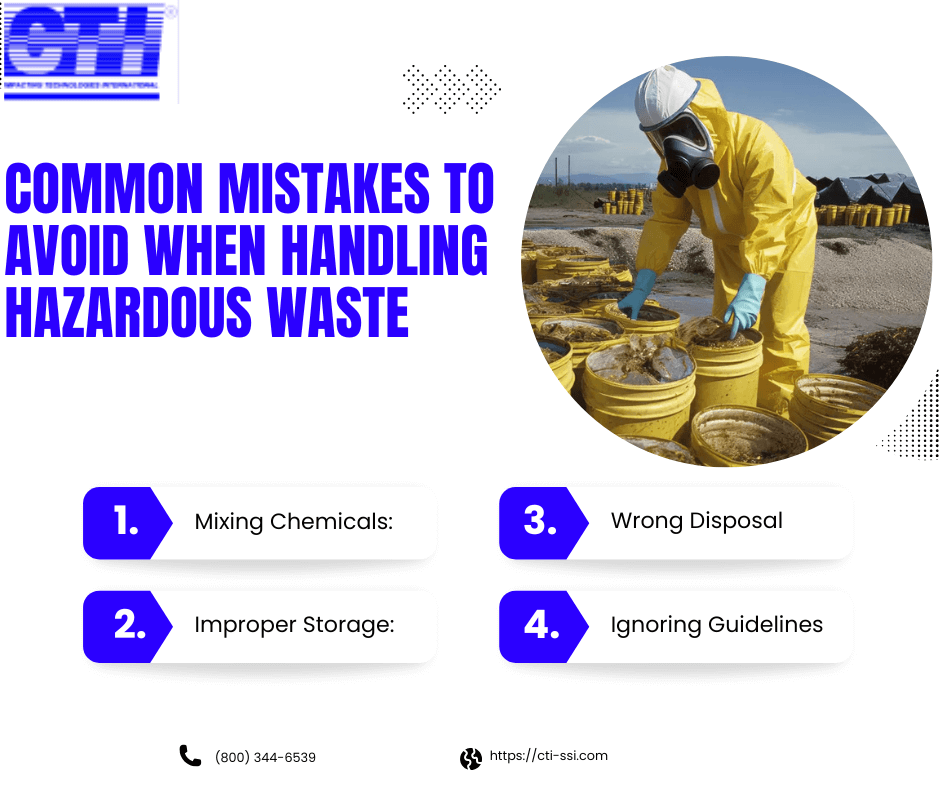
Another mistake is improper storage. Hazardous waste should never be stored in regular household containers or in areas where it can easily spill or leak. Using unapproved containers or leaving hazardous waste in places like basements or garages increases the risk of contamination. Always use appropriate storage containers and keep the materials in well-ventilated areas away from children and pets.
Additionally, many people make the mistake of disposing of hazardous waste down the drain, toilet, or trash. Flushing chemicals or dumping them in landfills can lead to water pollution and soil contamination, harming wildlife and humans. Instead, always follow local regulations for proper disposal or use professional disposal services.
Conclusion
Hazardous waste is a serious concern for both public health and the environment. Understanding common hazardous waste examples and learning how to manage them safely is essential. Whether it’s chemical cleaners, automotive fluids, or e-waste, taking the proper steps to dispose of these materials can prevent harmful effects on our health and planet.
When it comes to managing hazardous waste, choosing the right partner is key. CTI is here to help with expert solutions tailored to your needs. If you’re unsure how to handle hazardous waste, don’t hesitate to reach out for advice and services that ensure safety and compliance.


